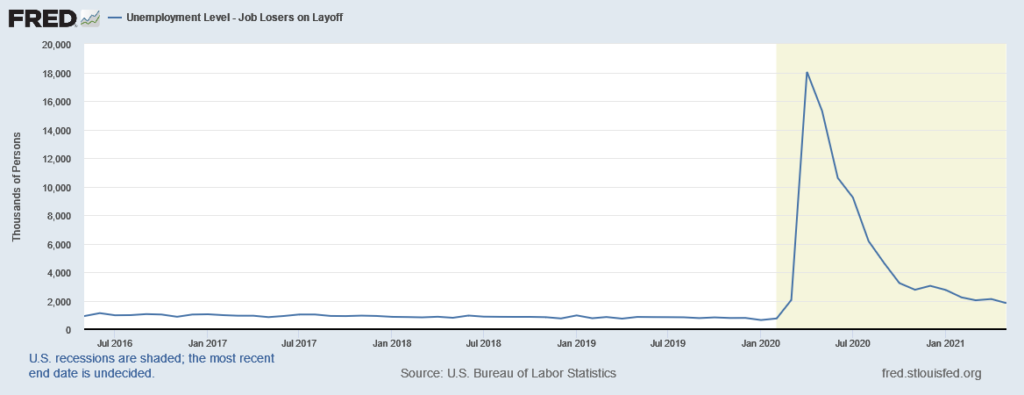Job Growth And Temporary Layoffs
An obvious point on the pace of job growth, that I had not paid attention to in recent months, is that it is easier to recall someone from a layoff than hire a new worker. (That’s one reason that some of us thought the paycheck protection program was a good idea and that work sharing should be promoted as widely as possible.) Anyhow, as the economy has mostly reopened from the pandemic shutdowns, the number of unemployed workers who report being on temporary layoffs has fallen sharply. Here’s the picture.

Source: Bureau of Labor Statistics.
As can be seen the number of people reporting that they were on layoffs soared during the shutdown last spring. It peaked at over 18 million in April of last year and then fell sharply through the summer. It was down to 4.6 million by September. It continued to fall through the rest of the year, but it was still at 2.7 million in January. Since then it has dropped by roughly one-third to just over 1.8 million in May.
This is still considerably higher than what we would see in a healthy economy, the figure had been around 1.0 million in 2014 and 2015, and had been under 800,000 just before the pandemic hit. But the figure is not extraordinary for a recession. The number of people reporting they were on temporary layoffs in the Great Recession peaked at just over 1.9 million in September of 2009.
This matters in terms of the pace of job growth that we can reasonably expect going forward. When hiring just means calling back a worker on layoff, we can expect companies to do much more of it than when it means seeking out new workers. This is why it was possible get job gains well in excess of 1 million a month last summer. But now that the number of people on temporary layoffs has fallen sharply, it is highly unlikely that we will see job gains over, or even near, 1 million a month.
That doesn’t mean we still can’t see very strong job growth. But, in this context, we are probably talking more like 600,000 or 700,000 a month, a bit more than what we saw in May, well below the pace of last summer. That means it will be somewhat longer until we can get to something resembling full employment, but we can be getting pretty close by next spring.



